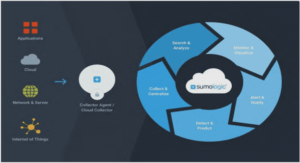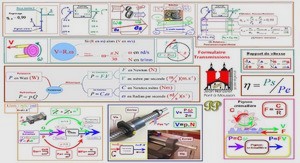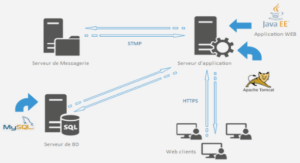Sommaire: Cours wireless application protocol push OTA protocol specification
1.SCOPE
2.DOCUMENT STATUS
2.1COPYRIGHT NOTICE
2.2ERRATA
2.3COMMENTS
3.REFERENCES
3.1NORMATIVE REFERENCES
3.2INFORMATIVE REFERENCES
4.DEFINITIONS AND ABBREVIATIONS
4.1DEFINITIONS
4.2ABBREVIATIONS
5.INTRODUCTION
6.SERVICE PRIMITIVE DEFINITION
6.1NOTATIONS
6.2SERVICE PRIMITIVE OVERVIEW
6.3PUSH OPERATIONAL PRIMITIVES
6.3.1 Po-Push
6.3.2 Po-ConfirmedPush
6.3.3 Po-PushAbort
6.3.4 Po-Unit-Push
6.4PUSH MANAGEMENT PRIMITIVES
6.4.1 Pom-Connect
6.4.2 Pom-Suspend
6.4.3 Pom-Resume
6.4.4 Pom-Disconnect
6.4.5 Pom-SessionRequest
7.PROTOCOL DESCRIPTION
7.1CONNECTIONLESS PUSH
7.2CONNECTION-ORIENTED PUSH
7.3APPLICATION ADDRESSING
7.4INITIATOR AUTHENTICATION
7.5TRUSTED CONTENT
7.6BEARER SELECTION AND CONTROL
8.PROTOCOL OPERATIONS
8.1APPLICATION DISPATCHING
8.2SERVER INITIATED SESSION
8.2.1 Session Initiation Application
8.2.2 Server Procedure
8.2.3 Client Procedure
8.2.4 Security Considerations
9.PROTOCOL DATA UNIT DEFINITION
9.1HEADER BASED PROTOCOL DATA UNIT
9.1.1 Accept-Application
9.1.2 Bearer-Indication
9.1.3 Push Flag
9.2CONTENT BASED PROTOCOL DATA UNIT
9.2.1 SIA content
10.STATIC CONFORMANCE REQUIREMENTS
10.1CLIENT FEATURES
10.2SERVER FEATURES
Extrait du cours wireless application protocol push OTA protocol specification
1. Scope
Wireless Application Protocol (WAP) is a result of continuous work to define an industry wide specification for developing applications that operate over wireless communication networks. The scope for the WAP Forum is to define a set of specifications to be used by service applications. The wireless market is growing very quickly and reaching new customers and providing new services. To enable operators and manufacturers to meet the challenges in advanced services, differentiation, and fast/flexible service creation, WAP defines a set of protocols in transport, session and application layers. For additional information on the WAP architecture, refer to “Wireless Application Protocol Architecture Specification” [WAP].
2. Document Status
This document is available online in the following formats:
PDF format at http://www.wapforum.org/.
2.1 Copyright Notice
© Copyright Wireless Application Forum Ltd, 1999.
Terms and conditions of use are available from the Wireless Application Protocol Forum Ltd. web site at
http://www.wapforum.org/docs/copyright.htm.
2.2 Errata
Known problems associated with this document are published at http://www.wapforum.org/.
2.3 Comments
Comments regarding this document can be submitted to the WAP Forum in the manner published at
http://www.wapforum.org/.
3. References
3.1 Normative References
[WDP] » Wireless Datagram Protocol « , WAP Forum, 05-Nov-1999,
URL:http://www.wapforum.org
[WSP] « Wireless Session Protocol », WAP Forum, 05-Nov-1999.
URL: http://www.wapforum.org
[WTLS] « Wireless Transport Layer Security Protocol », WAP Forum, 05-Nov-1999.
URL:http://www.wapforum.org
[PushMsg] “Push Message Specification”, WAP Forum, 16-August-1999.
URL: http://www.wapforum.org
[RFC2119] « Key words for use in RFCs to Indicate Requirement Levels », S. Bradner, March 1997.
URL: http://www.ietf.org/rfc/rfc2119.txt
[ABNF] “Augmented BNF for Syntax Specification: ABNF”, D. Crocker, et al. November 1997,
URL: http://www.ietf.org/rfc/rfc2234.txt
3.2 Informative References
[WAE] « Wireless Application Environment Specification », WAP Forum, 04-Nov-1999.
URL: http://www.wapforum.org
[WAP] “Wireless Application Protocol Architecture Specification”, WAP Forum, 30-Apr-1998.
URL: http://www.wapforum.org
[HTTP] “Hypertext Transfer Protocol – HTTP 1.1”, R. Fielding, et al. June 1999,
URL: http://www.ietf.org/rfc/rfc2616.txt
4. Definitions and Abbreviations
4.1 Definitions
The following are terms and conventions used throughout this specification.
The key words “MUST”, “MUST NOT”, “REQUIRED”, “SHALL”, “SHALL NOT”, “SHOULD”, “SHOULD NOT”, “RECOMMENDED”, “MAY”, and “OPTIONAL” in this document are to be interpreted as described by [RFC2119].
Application – A value-added data service provided to a WAP Client. The application may utilise both push and puldata transfer to deliver content
Application-Level Addressing – the ability to address push content between a particular user agent on a WAP clienand push initiator on a server.
Bearer Network – a network used to carry the messages of a transport-layer protocol between physical devices.
Multiple bearer networks may be used over the life of a single push session.
4.2 Abbreviations
For the purposes of this specification, the following abbreviations apply.
CPI Capability and Preference Information
DNS Domain Name Server
DTD Document Type Definition
HTTP Hypertext Transfer Protocol
IANA Internet Assigned Numbers Authority
IP Internet Protocol
OTA Over The Air
PAP Push Access Protocol
PI Push Initiator
PPG Push Proxy Gateway
QOS Quality of Service
RDF Resource Description Framework
RFC Request For Comments
SGML Standard Generalized Markup Language
SI Service Indication
SIA Session Initiation Application
SIR Session Initiation Request
SL Service Loading
SSL Secure Socket Layer
TLS Transport Layer Security
URI Uniform Resource Identifier
URL Uniform Resource Locator
UTC Universal Time Co-ordinated
WAP Wireless Application Protocol
WDP Wireless Datagram Protocol
WSP Wireless Session Protocol
WBXML WAP Binary XML
WINA WAP Interim Naming Authority
WTLS Wireless Transport Layer Security
XML Extensible Mark-up Language
5. Introduction
The architecture consists of a distributed client/server application, with a server residing in the push proxy gateway or a push initiator, and a client residing in the mobile device. The server and client communicate using the Push OTA protocol which utilises WSP Session [WSP] services.
Connection-oriented push requires that a push session is established before the push content can be delivered. The connection-oriented push includes both confirmed and unconfirmed push. A push session for a connection-oriented push can be shared among multiple client applications. Each one of two registered WDP ports for connectionless push can also be shared among multiple client applications. A client application is identified by application ID.
……..
Wireless application protocol push OTA protocol specification PDF (194 KO) (Cours PDF)




